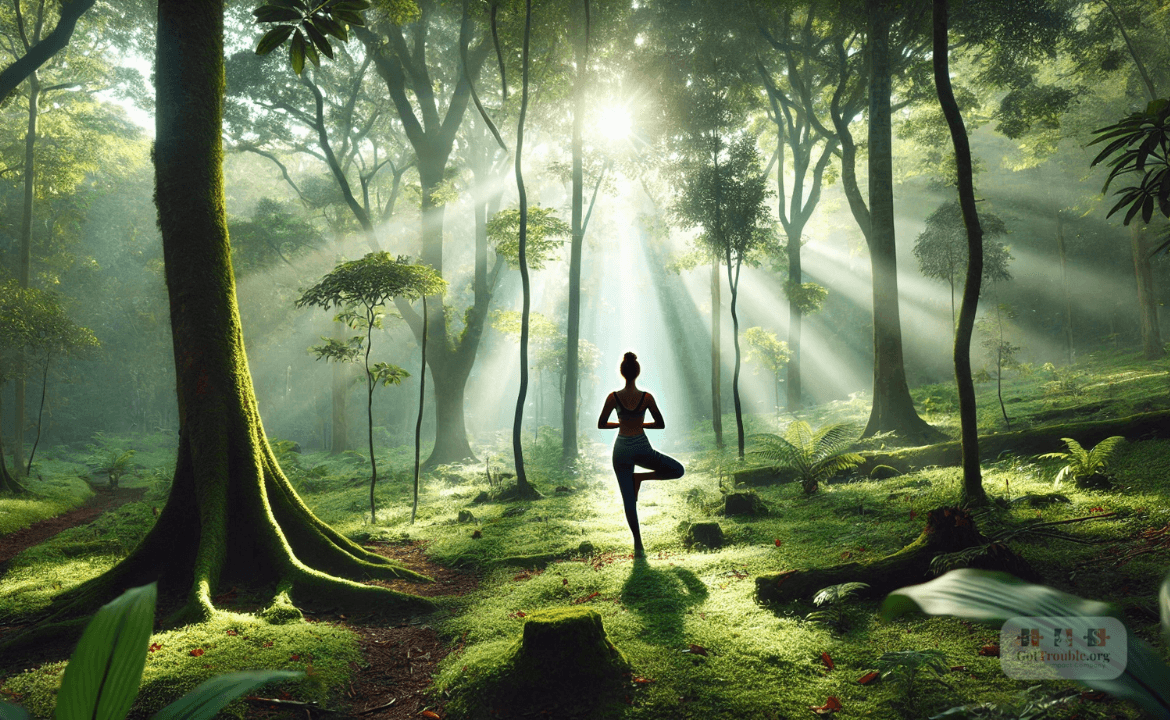We all experience stress from time to time. Life is demanding, and it’s easy to feel like you’re carrying the world’s weight on your shoulders (quite literally). The good news? There are ways to ease that load, and yoga is one of the most compassionate and effective tools I’ve found for relieving stress.
Having spent years practicing and teaching yoga, I’ve experienced firsthand how it can help manage stress and anxiety.
I’d love to share a gentle, practical approach to using yoga to improve your mental health and overall well-being.
So, let’s take a deep breath together (yes, really—try it—breathing deeply helps! ) and explore how yoga can bring a little more peace into your life.
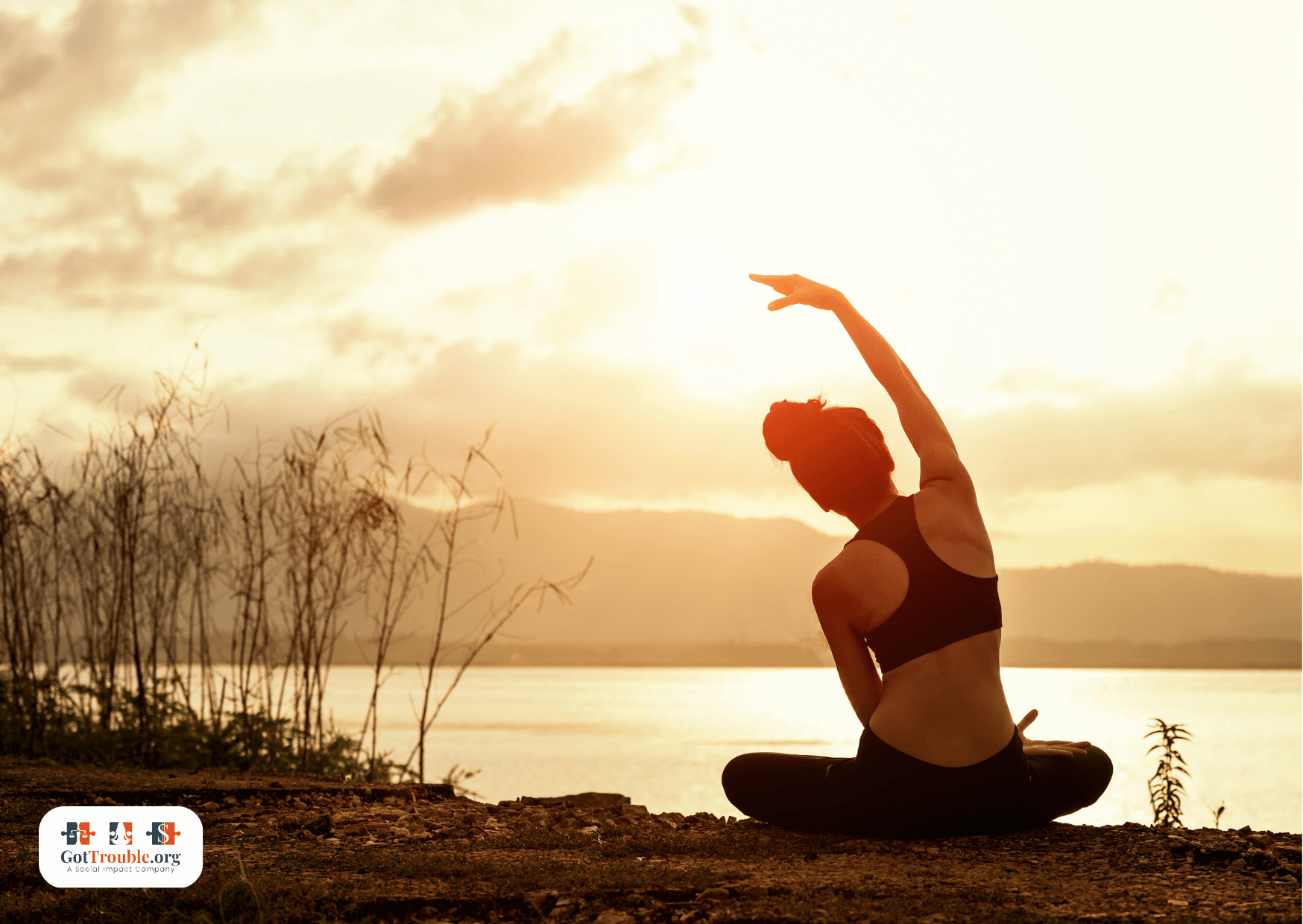
The Science Behind How Yoga Reduces Stress and Anxiety
Let’s talk a bit about the science behind how yoga works to reduce stress. It all comes down to our nervous system. When we’re stressed, the sympathetic nervous system takes over—this is the “fight or flight” mode that was useful back when we had to escape from saber-toothed tigers. Nowadays, it’s not so helpful when you’re stuck in traffic or dealing with work deadlines.
Yoga, on the other hand, activates the parasympathetic nervous system, which tells your body, “Hey, It’s okay to relax now.” Through consistent practice, yoga teaches your body to stay calm even in stressful situations. It’s like retraining your mind and body to handle life’s chaos without feeling overwhelmed.
Beyond stress relief, yoga provides physical benefits and helps quiet the mind and find peace within.
Easy Yoga Poses to Try
You don’t need to be a yoga master to start feeling the benefits. In fact, some of the simplest yoga poses offer the most relief. Let me walk you through a few of my favorites:
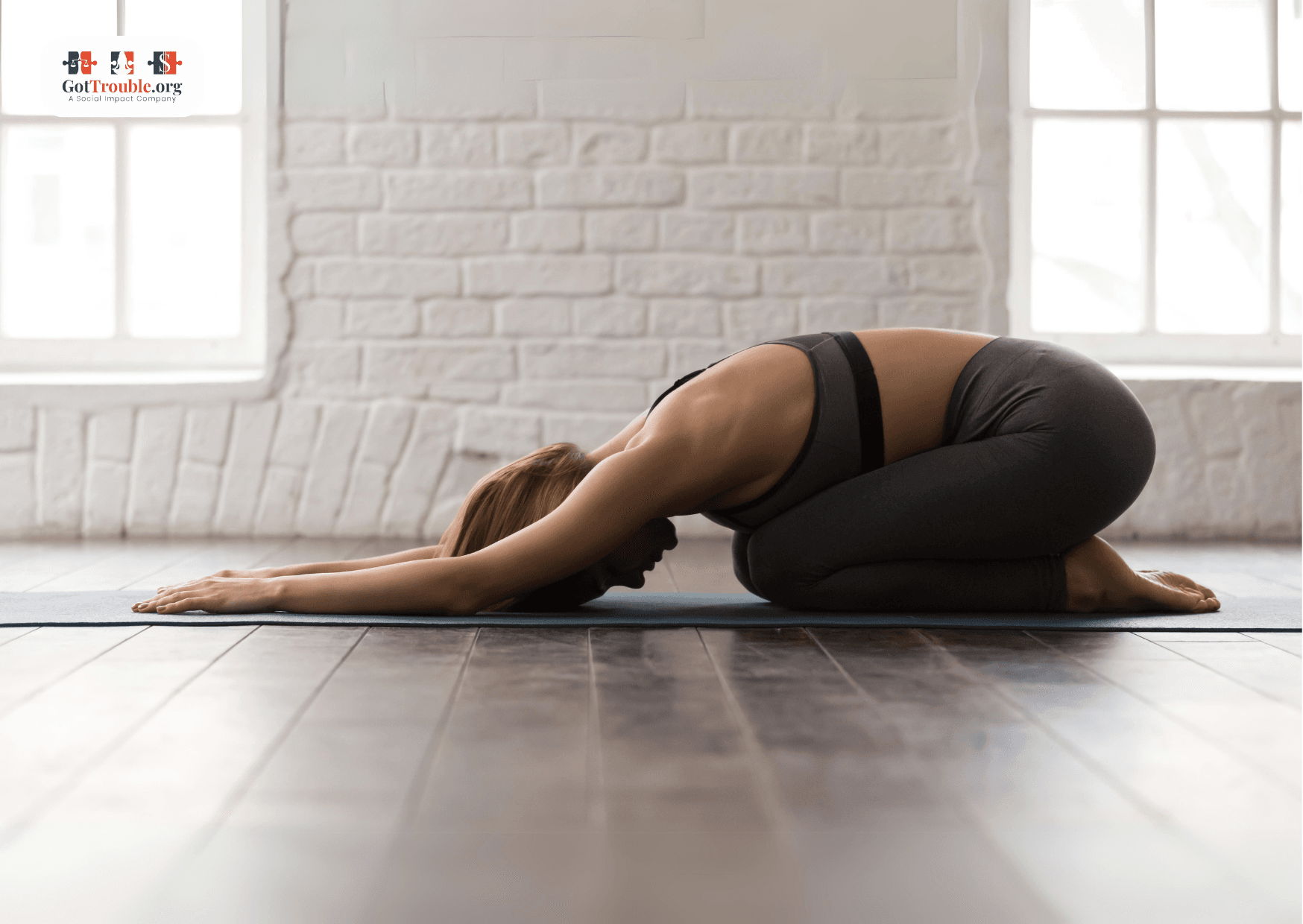
Child’s Pose (Balasana)
Think of this as your go-to safe space. Start by kneeling on the floor, bringing your big toes to touch and your knees wide. Fold forward, stretching your arms in front of you, and rest your forehead on the mat. As you breathe, you’ll feel your back and shoulders relax.
This pose is like a little hug for your body—it gently releases tension while giving you a moment to just breathe. Stay here for a few breaths or longer if you need it.

Downward Dog (Adho Mukha Svanasana)
Don’t let the name scare you—it’s not as tricky as it sounds. From a hands-and-knees position, lift your hips toward the ceiling, forming an upside-down V with your body. This stretch is fantastic for your back, legs, and shoulders. Plus, it gets the blood flowing, helping to reduce the physical effects of stress.

Cat-Cow Pose (Marjaryasana/Bitilasana)
One of my personal favorites for relieving tension in the spine. Start on all fours and alternate between arching your back (Cow Pose) and rounding it (Cat Pose). It feels like a mini massage for your back and neck. If you only have time for one thing today, do this!
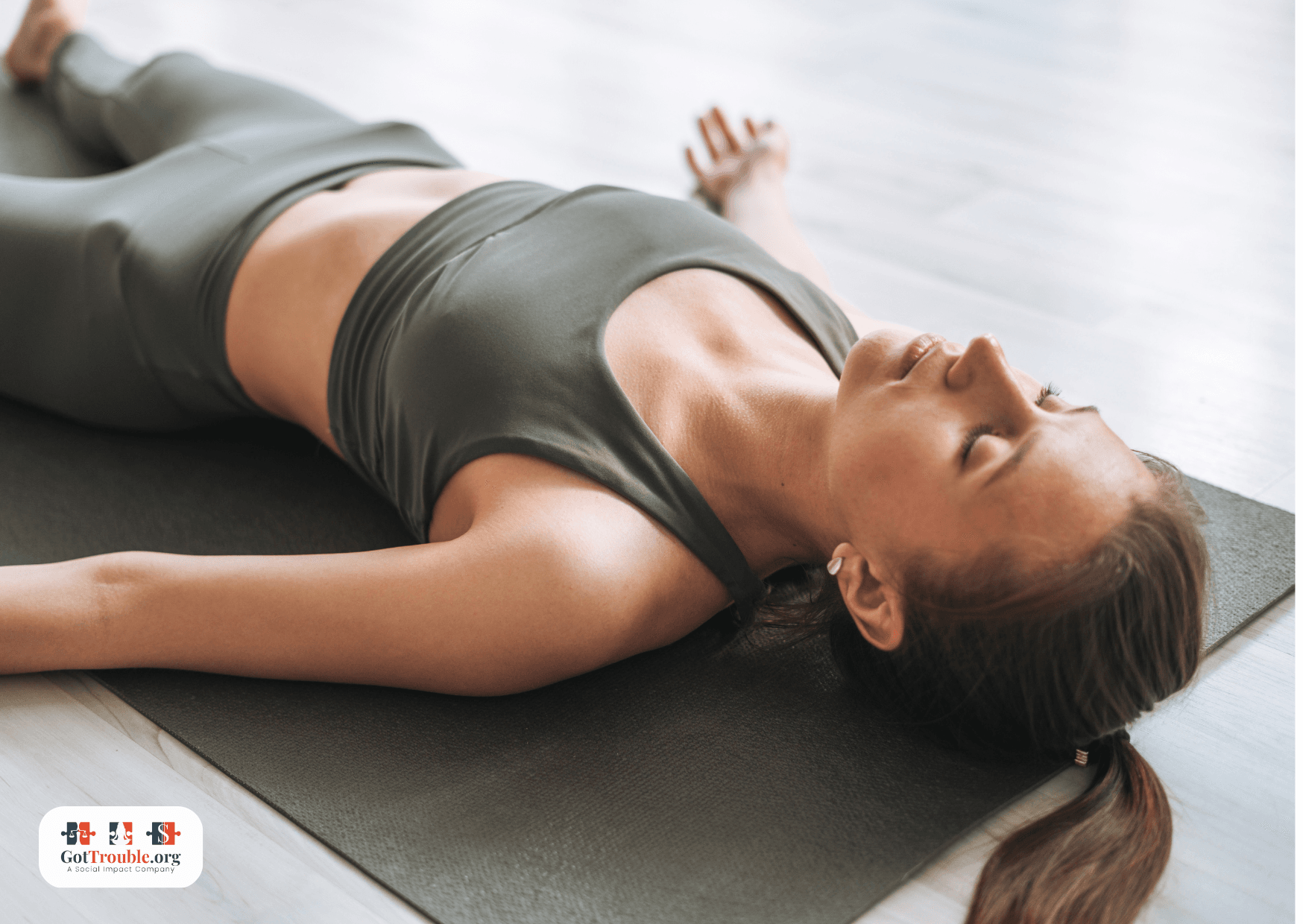
Corpse Pose (Savasana)
This might be the best part of any yoga session—lying down and doing absolutely nothing. Lie flat on your back, arms at your sides, and let your body relax completely.
Focus on your breath and allow yourself to truly relax. This pose is all about letting go—both physically and mentally. These poses, though simple, are powerful relaxation techniques. They help release tension stored in the body and calm the mind, allowing you to experience both physical and mental benefits quickly.
Yogic Breathing Techniques (Pranayama) for Stress Relief
One of the most powerful things about yoga is the focus on breathing exercises. I can’t tell you how many times I’ve caught myself holding my breath when I’m stressed. Sound familiar? It’s amazing what a few deep breaths can do.
Here are a couple of easy breathing techniques to help you feel more relaxed:
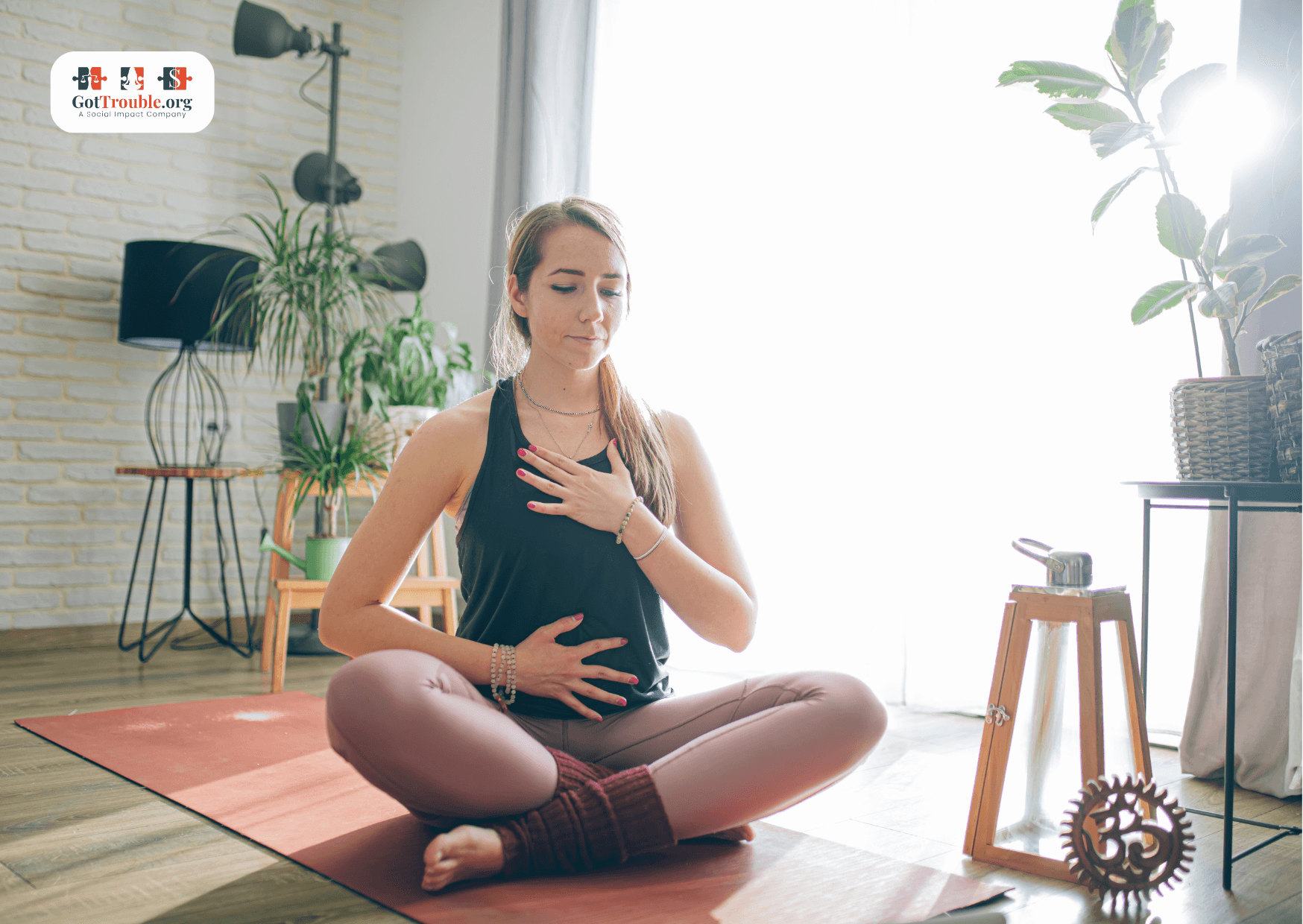
Deep Belly Breathing
This is as simple as it sounds. Sit or lie comfortably, place one hand on your chest and the other on your belly. Inhale through your nose, allowing your belly to rise, and exhale slowly through your mouth.
This encourages full, deep breaths, which can immediately reduce feelings of anxiety. Repeat for a few minutes until you feel calmer and cantered.
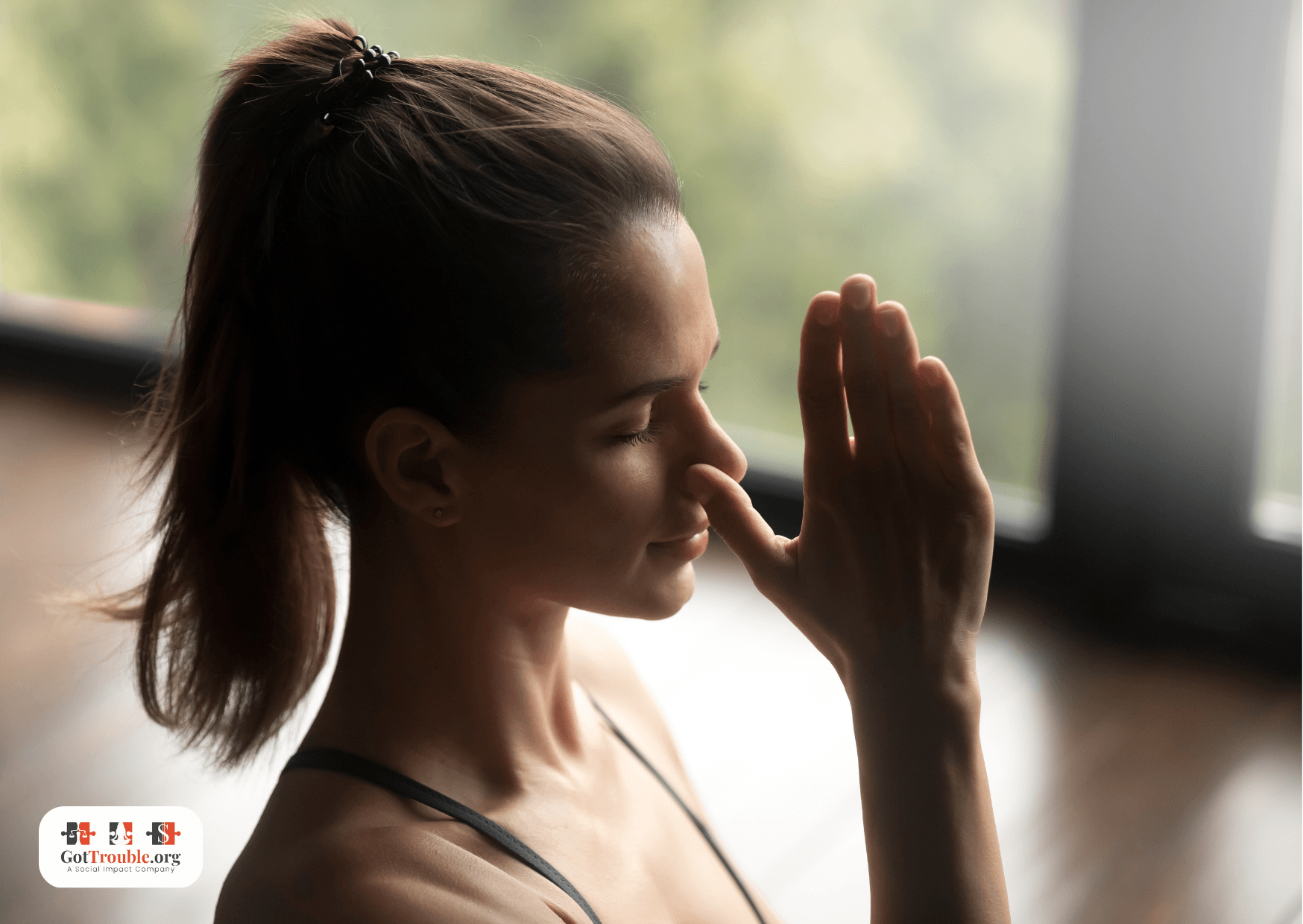
Alternate Nostril Breathing (Nadi Shuddhi Pranayama)
I know this might sound a little unusual, but trust me on this one. Nadi Shuddhi Pranayama means “cleansing of the energy channels.” “Nadi” means energy pathways in the body, and “shuddhi” means cleansing or purifying.
When you practice this breathing technique, you help to clear and balance the flow of energy in your body. This keeps your mind calm, reduces stress, and makes you feel calm and balanced. Let’s see how to do it.
Close your right nostril with your thumb, inhale through the left nostril, then close the left nostril with your index finger, open your right nostril, and exhale. Repeat a few times. It’s a simple yet effective way to balance your nervous system.
Kapalabathi Pranayama (Skull illuminating Breathing)
Imagine hitting the “refresh” button on your mind—this is what Kapalabhati Pranayama does. Kapala means skull, and bathi means to shine or illuminate. It’s a simple breathing technique where you take quick, forceful exhalations (like you’re blowing out a tiny candle through your nose, mouth closed) followed by natural, easy inhales.
The exhale does all the work, and you might even feel like you’re giving your brain a mini workout. This breathwork helps release built-up tension, clears mental clutter, and gives you a burst of fresh energy.
Plus, you might feel a little ab workout happening, too. So it’s a two-for-one deal – calmer mind and stronger core.
Give it a try and see how light you feel.
Creating a Home Yoga Practice
One of the best things about yoga is that you don’t need a fancy studio or expensive gear to start practicing. All you need is a small space and a willingness to give it a try.
Setting up a regular yoga practice at home is easy and lets you fit yoga into your life, no matter how busy you are.
When I started practicing yoga at home, I quickly realized that the key was consistency. You don’t need to do an hour-long session every day—even five minutes of stretching and breathing deeply can make a difference.
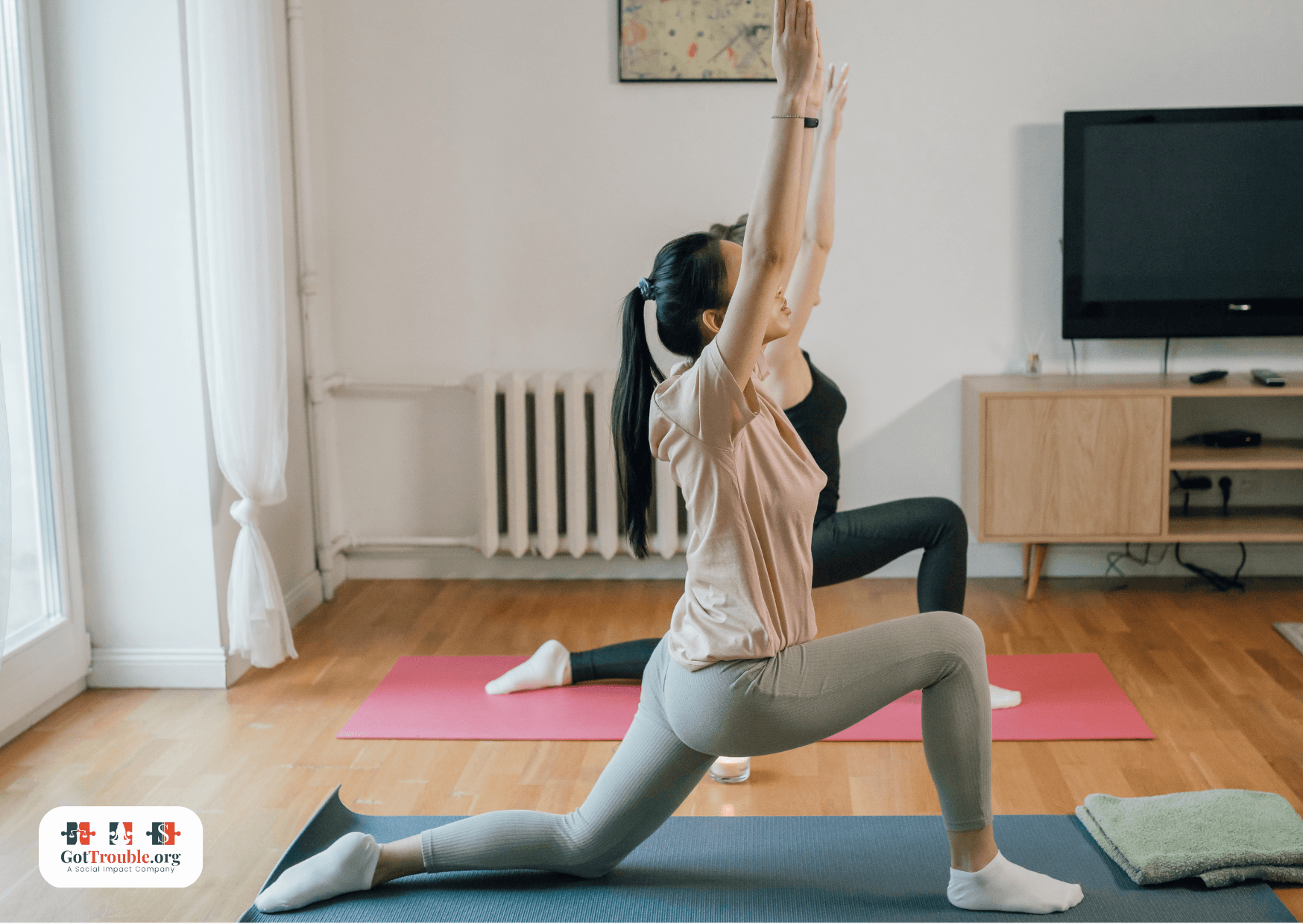
(Above Image) Two students in yoga pose in a yoga studio.
The Cost of Yoga (And How to Make It Free!)
Yoga doesn’t have to be a financial commitment. You don’t have to spend a fortune to enjoy the benefits of yoga. There are plenty of affordable resources available.
Here are a few tips:
- Free Online Classes: So many amazing instructors offer free classes online. YouTube is full of them, so you can practice from home without spending a dime.
- Community Classes: Check out your local community centers or libraries—they often offer donation-based or low-cost classes.
- Practice at Home: As I said, your living room can be the perfect yoga studio. Use a blanket instead of a mat, and you’re all set.
No need to break the bank—yoga is about finding peace, not adding to your financial stress!!!
Yoga Therapy: A Holistic Approach to Wellness
Over the years, I’ve witnessed the incredible benefits of yoga therapy in helping people with mental health issues. It goes beyond just physical postures. It’s about finding peace and balance in the mind and the body.
Yoga therapy is a holistic approach combining breathing techniques, meditation, and gentle yoga postures to help people manage stress and anxiety. Yoga can even help with depression.
It’s a gentle, supportive way to approach mental health that can make a huge difference in how you feel every day.
- Over 60% of yoga users were motivated to exercise more regularly.
- Over 40% of yoga users were motivated to eat healthier.
- Over 55% of yoga users reported improved sleep.
- Over 85% of yoga users reported reduced stress.
- Over 12% of yoga users cut back or stopped drinking alcohol.
- Over 25% of yoga users cut back or stopped smoking cigarettes.
My Experiences with Yoga’s Transformative Power
Throughout my journey, yoga has been a steady companion. It’s not always a dramatic shift—sometimes, it’s the quiet moments, the small wins that make the biggest impact.
I’ve had the privilege of seeing yoga’s impact on others, and let me share a few real stories of how yoga has made a difference because sometimes, it’s these personal experiences that truly show the power of the practice.
- One student came to me completely overwhelmed by her demanding job and later became my friend. At first, she wasn’t convinced yoga could help with her constant stress. But after a few weeks of practice, she noticed small but impactful changes. Her body felt more at ease, her mind wasn’t racing as much, and she started sleeping more soundly. It didn’t erase the stress from her life, but it gave her the tools to handle it with more clarity and confidence.
- Another person I worked with had been struggling with anxiety for years. He had tried various treatments but still found it hard to stay grounded during stressful moments. We started slow, focusing on simple breathing techniques and gentle movements. Over time, those techniques became his go-to remedy when anxiety started to creep in. Now, yoga is a regular part of his life, and he often tells me how much more grounded and focused he feels because of it.
Again, yoga is not about quick fixes or seeing dramatic changes. It’s about finding simple, meaningful ways to connect with yourself and handle life’s ups and downs.
Misconceptions about Yoga for Stress Relief
Misconception: You need to be physically fit to start yoga
Reality: Yoga is accessible for all body types and fitness levels, with modifications available for beginners or those with physical limitations.
Misconception: Yoga takes too much time to be effective
Reality: Even short sessions of 5–10 minutes can significantly reduce stress and improve mental well-being when practiced consistently.
Fears Related to Yoga for Stress Relief
Fear #1: Fear of doing yoga poses incorrectly
Reality: Many poses are simple, and focusing on breath and comfort is more important than perfect form, especially for stress relief.
Fear #2: Fear of not being able to relax or quiet the mind during practice
Reality: Relaxation and mindfulness take practice, but yoga teaches patience and self-compassion, helping to gradually quiet the mind over time.
Your Body is Your Home
Let Yoga Be Your Friend and Companion
Yoga has consistently been a source of calm and strength for me, and I believe it can be for you, too. Whether you’re dealing with work pressures, family challenges, or the general stresses of life, yoga offers gentle and supportive relief.
Try it and see how it can help you navigate life’s ups and downs with more peace and clarity.
Also, don’t forget to check out our other articles on how yoga can benefit other parts of your life, such as physical health and spiritual growth.
Keep practicing, and may you find peace and balance through yoga.
Sources and References
17 Best Yoga Poses for Anxiety (Depression and Stress).
Unlocking Inner Peace: How Yoga Can Improve Emotional Health – World Yoga Forum.
5 Best Yoga Poses for Stress Relief.
Yoga for Stress Relief: A Beginner’s Guide to Finding Inner Calm.
Cervical Health Facts You Should Know | MedAmour.

